Broad Perspectives in Speech-Language Pathology
Please enter a valid quantity
Please select a product format
That product is out of stock
BEFORE YOU BUY...
This course is one of more than 750+ CE courses in the ASHA Learning Pass, which gives you unlimited access to more than 1,350 hours of CE content for the cost of just one or two a la carte courses.
*If this is a recent SIG Perspectives course, you must also be a Special Interest Group (SIG) affiliate to unlock it as part of your subscription.
Already an ASHA Learning Pass subscriber?
Login
This SIG 19 activity bundles four articles providing perspectives on a broad variety of
topics in speech-language pathology. First, Holt provides an overview of current and
historical discussions of gender and race, challenging the reader to accept that one’s
perspective is indebted to a specific belief system. Readers are to evaluate how gender
and race are used to categorize people and examine whether a member of a
marginalized or minoritized group affects that person’s access to or use of intervention
services. Next, Cox and Koenig define speech privacy and provide a brief history and
applications in the health care setting. A general perspective is outlined, including
threats to speech privacy, and speakers who use an electrolarynx are used as an
example to highlight specific issues clinicians may encounter. Ramanarayanan et al.
discuss the use of speech as a biomarker in therapy and research. In summary,
robustness of analytics—specificity, diversity, and physiological interpretability—must be
further developed. Finally, Weerathunge, Tomassi, and Stepp review a number of
populations with voice disorders that have been studied using altered auditory feedback.
Many have hyperactive auditory feedback responses and the differing underling reasons
are reviewed. Therapy considerations are also described.
Learning
Outcomes
You
will be able to:
- evaluate how gender and race are used to categorize people
- outline speech privacy considerations
- describe at least two clinical and technological challenges of speech as a
biomarker
- summarize the insights altered auditory feedback studies have provided
on the underlying pathophysiology of different voice disorders
Assessment
Type
Self-assessment—Think
about what you learned and report on the Completion Form how you will use your
new knowledge.
Articles
in This Course
- Reflecting on the Role of Gender and Race in Speech-Language Pathology
by Yolanda Holt, published in SIG 19, October 6, 2022
- An Introduction to Speech Privacy for Early Career Clinicians: General Considerations
and the Specific Example of Electrolarynx Users by Steven R. Cox and Laura L. Koenig, published in SIG 19, Volume 7, Issue 3,
June 13, 2022
- Speech as a Biomarker: Opportunities, Interpretability, and Challenges by Vikram
Ramanarayanan, Adam C. Lammert, Hannah P. Rowe, Thomas F. Quatieri, and Jordan
R. Green, published in SIG 19, Volume 7, Issue 1,
February 11, 2022
- What Can Altered Auditory Feedback Paradigms Tell Us About Vocal Motor Control in
Individuals With Voice Disorders? by Hasini R. Weerathunge, Nicole E. Tomassi, and
Cara E. Stepp, published in SIG 19, Volume 7, Issue 3, June 13, 2022
|

